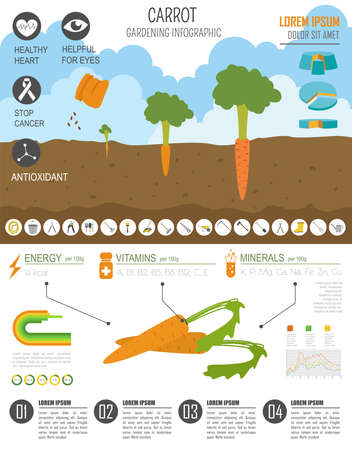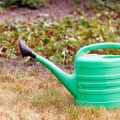What Is Composting and Why Does It Matter?
Composting is a natural process that transforms organic waste—like food scraps, leaves, and grass clippings—into rich, dark soil called compost. This process happens with the help of tiny organisms such as bacteria, fungi, and even earthworms, which break down the material over time. But why should you care about composting in your American backyard or community garden?
The Environmental Significance of Composting
Every year, millions of tons of food waste end up in U.S. landfills. When organic matter is buried under piles of trash, it decomposes without enough oxygen and produces methane—a powerful greenhouse gas. By composting at home or in your neighborhood, you can:
- Reduce landfill waste: Less garbage means less space needed for landfills.
- Lower greenhouse gases: Composting cuts down on methane emissions.
- Recycle nutrients: Valuable nutrients return to the soil instead of being lost forever.
How Composting Supports Sustainable Gardening
Sustainable gardening focuses on working with nature rather than against it. Composting is a key part of this approach because it:
- Improves soil health: Compost enriches the soil with organic matter and nutrients.
- Reduces need for chemical fertilizers: Healthy soil means healthier plants without synthetic inputs.
- Saves water: Compost helps soil retain moisture, reducing the need for frequent watering.
A Quick Look: What Can You Compost?
| Compostable Items (Yes) | Non-Compostable Items (No) |
|---|---|
| Fruit & vegetable scraps | Dairy products |
| Coffee grounds & filters | Meat & bones |
| Eggshells | Greasy foods |
| Grass clippings & leaves | Pesticide-treated plants |
| Twig & small branches | Plastic & metal |
The American Context: Practical Steps for Home Gardeners
No matter if you live in a city suburb or out in the country, composting can fit your lifestyle. Backyard bins are great for larger spaces, while countertop containers work well for apartments. Many communities also offer curbside compost pickup or drop-off programs. By starting small and learning what works best for you, composting becomes an easy habit that benefits both your garden and the planet.
2. The Decomposition Process: Nature’s Recycling System
What Happens When You Compost?
Composting is more than just tossing kitchen scraps into a pile—its a natural recycling system powered by science. When you compost, organic materials like food waste and yard trimmings break down into rich, dark soil called humus. This process happens thanks to billions of tiny helpers working behind the scenes in your garden.
The Key Players in Decomposition
Let’s meet the stars of the decomposition show:
| Decomposer | Role in Composting |
|---|---|
| Bacteria | The main workhorses; break down most materials quickly |
| Fungi (like molds) | Tackle tougher stuff such as wood and stems |
| Actinomycetes | Create earthy smell; break down cellulose and tough plant fibers |
| Invertebrates (worms, beetles, mites) | Shred and mix materials, speeding up the process |
Bacteria: The Powerhouse Microbes
Bacteria are tiny but mighty. They multiply fast when conditions are right—think warmth, moisture, and plenty of air. These microbes start breaking down soft, wet scraps first, producing heat that helps other decomposers get to work.
Fungi and Actinomycetes: Breaking Down the Tough Stuff
Once bacteria have done their job on easy-to-eat materials, fungi and actinomycetes move in to decompose woody stems and paper. If you spot white threads or smell that classic “earthy” scent in your compost pile, thank these organisms.
Larger Critters: Nature’s Shredders
As the pile matures, worms, beetles, and other small bugs help chop up larger pieces. Their movement mixes the compost and adds air, making it easier for microbes to do their work.
What Does a Healthy Compost Pile Need?
For decomposition to thrive, your compost pile needs four essentials:
| Requirement | Why It Matters |
|---|---|
| Carbon (“Browns”) | Provides energy for microbes; found in leaves, straw, paper |
| Nitrogen (“Greens”) | Helps microbes grow and reproduce; found in grass clippings, food scraps |
| Oxygen | Keeps things aerobic so good bacteria can thrive; added by turning the pile |
| Moisture | Keeps everything damp (like a wrung-out sponge); too dry or too wet slows things down |
Balancing Your Compost Ingredients
A good rule of thumb is to use about three parts “browns” to one part “greens.” Mixing the pile regularly with a pitchfork or shovel keeps oxygen flowing and prevents unpleasant smells.
Sustainable Tip:
If you want to keep your compost eco-friendly, avoid adding meat, dairy, or oily foods—they attract pests and slow down decomposition. Stick with fruit and veggie scraps, coffee grounds, eggshells, leaves, grass clippings, and shredded cardboard for best results!

3. Compost Ingredients: The Browns, The Greens, and The In-Betweens
Getting compost right starts with knowing what to put in—and what to leave out. In American households, its easy to find plenty of compostable items, but mixing the wrong things can slow down decomposition or attract unwanted pests. Let’s break it down into three categories: browns, greens, and those tricky in-betweens.
What Are Browns?
Browns are materials rich in carbon. They help provide energy for microbes and keep your compost from getting too wet or smelly. Common household browns include:
| Brown Ingredients (Carbon-Rich) | Examples from US Homes & Yards |
|---|---|
| Dry leaves | Fall yard clean-ups, raked piles |
| Cardboard & paper (shredded) | Amazon boxes, junk mail (no glossy finish), paper towels |
| Sawdust/wood chips (untreated) | Home woodworking scraps |
| Straw/hay | Leftover from Halloween décor or pet bedding |
| Egg cartons (paper only) | Breakfast leftovers |
What Are Greens?
Greens bring nitrogen to your compost pile, fueling the decomposition process. These items are usually moist and come from your kitchen or yard waste:
| Green Ingredients (Nitrogen-Rich) | Examples from US Kitchens & Lawns |
|---|---|
| Fruit & vegetable scraps | Apple cores, carrot peels, salad leftovers, banana peels |
| Coffee grounds & filters | Your morning brew waste (filters included if unbleached) |
| Tea bags (non-plastic) | Lipton or other brands—check for plastic-free bags! |
| Grass clippings | Mowing day leftovers (avoid if treated with chemicals) |
| Plant trimmings/weeds (not seeding) | Pulled dandelions, pruned herbs—no seeds! |
| Bread and grains (small amounts) | Old sandwich crusts, stale rice—but not moldy! |
The In-Betweens: What About Everything Else?
Certain items don’t fit neatly as brown or green. Some may be compostable but need caution; others should never go in home compost bins. Here’s a quick guide:
| Compost “In-Betweens” and No-Gos | Description/Examples |
|---|---|
| Dairy products, meat, bones, oils/fats | Avoid these—they attract rodents and cause odor issues. |
| Citrus peels/onion skins/garlic cloves | Add sparingly; they can slow down composting and bother worms. |
| Treated wood/sawdust with chemicals | Never add—can introduce toxins to your garden. |
| PET WASTE or cat litter (clay-based) | Avoid for safety reasons—can carry harmful pathogens. |
| Glossy magazines/stickers/plastic-coated papers | Not compostable; plastics won’t break down. |
Common Composting Mistakes to Avoid in American Households:
- Piling on too much of one type: Too many greens? It’ll smell bad. Too many browns? Decomposition slows down.
- Add no cooked foods or greasy leftovers: These attract critters like raccoons and rats.
- No yard waste treated with pesticides or herbicides: Can harm beneficial microbes and plants later on.
- Avoid big branches and sticks: They take years to break down—chip them first if you want to add them.
- No diseased plants: Don’t risk spreading plant diseases back into your garden soil.
- No synthetic materials: Keep out plastics, rubber bands, twist ties, and anything not naturally biodegradable.
The Right Mix for Sustainable Composting Success
Aim for a balance: about 2-3 parts browns for every 1 part green. This keeps your pile healthy and the science of decomposition working efficiently—turning everyday waste into rich “black gold” for your garden while reducing landfill impact. By sticking with local household scraps and avoiding common pitfalls, you’re creating a sustainable cycle right in your backyard!
4. Environmental Benefits: Compost’s Role in a Greener Future
Composting is more than just a gardening trend—it’s a powerful way for each of us to help the planet right from our backyard. By understanding how decomposition works in your garden, you can see firsthand how composting makes a big difference for the environment. Let’s dive into the key ways composting leads to a greener future.
How Composting Reduces Landfill Waste
When food scraps and yard waste end up in landfills, they break down without enough oxygen, which creates methane—a potent greenhouse gas. Composting at home keeps these organic materials out of the landfill and lets them decompose naturally with oxygen, turning them into valuable soil instead of pollution.
| What Happens in Landfill | What Happens in Compost Pile |
|---|---|
| Waste breaks down slowly | Waste breaks down quickly |
| Creates methane gas | No methane produced |
| Takes up landfill space | Makes nutrient-rich soil |
Composting and Carbon Sequestration
Healthy compost adds organic matter to your soil, helping it store (or “sequester”) more carbon. This process locks carbon away underground instead of letting it escape into the atmosphere as carbon dioxide. Over time, even small backyard compost bins add up to make a real impact on reducing climate change.
How Your Compost Helps Fight Climate Change:
- Adds organic material to soil, storing carbon long-term
- Lowers the need for chemical fertilizers, which take lots of energy to produce and ship
- Cuts down on methane emissions by keeping food waste out of landfills
Saving Water with Compost
One of the coolest side effects of composting is how much water your garden can save. Compost improves your soil’s structure so it holds onto moisture better—meaning you don’t have to water as often. This is especially important in many parts of the U.S., where droughts are becoming more common.
| Without Compost | With Compost |
|---|---|
| Sandy or hard soil dries out fast | Soil stays moist longer |
| More watering needed | Less watering needed |
| Nutrients wash away easily | Nutrients stay put for plants to use |
Your Actions Make a Big Difference!
Every time you add veggie peels or grass clippings to your compost bin, you’re taking a simple step toward protecting our planet. Composting helps reduce waste, trap carbon in the soil, and conserve precious water—all while creating healthier gardens and communities. When we all work together, these small actions grow into something huge for our world’s future.
5. Practical Tips for Backyard Compost Success
Step-by-Step Guide to Starting Your Compost Bin or Pile
Step 1: Choose the Right Spot
Pick a location in your yard thats shady, well-drained, and easy to access year-round. Avoid placing it too close to your house or fence to prevent any odor issues.
Step 2: Select Your Compost Container
You can use a store-bought bin, build your own with wood pallets, or simply start a pile on the ground. Choose what fits your space and style best.
Step 3: Gather Materials
Composting works best with a balance of “greens” (nitrogen-rich materials) and “browns” (carbon-rich materials). Use the table below as a handy guide:
| Greens (Nitrogen) | Browns (Carbon) |
|---|---|
| Fruit & veggie scraps | Dried leaves |
| Coffee grounds | Paper towels/newspaper (uncoated) |
| Grass clippings | Sawdust (untreated wood) |
| Tea bags (no staples) | Cardboard (shredded) |
Step 4: Build Your Pile in Layers
Start with a layer of coarse browns like twigs for airflow. Add alternating layers of greens and browns, keeping the pile moist but not soggy—think wrung-out sponge.
Step 5: Maintain Your Compost
- Aerate: Turn the pile every couple of weeks to give microbes oxygen and speed up decomposition.
- Monitor Moisture: If its too dry, sprinkle with water; if too wet, add more browns.
- Chop It Up: Smaller pieces break down faster—chop kitchen scraps before adding them.
Troubleshooting Common Issues
| Problem | What It Means | How to Fix It |
|---|---|---|
| Pile smells bad (like rotten eggs) | Lack of air, too wet, or too many greens | Add dry browns and turn the pile for more airflow |
| Pile is dry and not breaking down | Too little moisture or not enough greens | Add water and fresh green materials; mix well |
| Pile attracts critters (raccoons, rodents) | Meat/dairy/oily food added or uncovered pile | Avoid animal products; bury food scraps in center; use secure bin lid |
| Pile is slow to decompose | Lack of nitrogen, cold weather, or big chunks | Add more greens, chop materials smaller, keep pile covered in winter |
Ensuring Effective Breakdown: The Science at Work!
- Bacteria and fungi are the real heroes—keep them happy with balanced greens and browns.
- The pile heats up during active decomposition; this is normal and means microbes are working hard.
- If you see steam or feel warmth inside the pile, youre on track for successful composting!
- A healthy compost pile smells earthy—not sour or rotten—thanks to proper microbial action.
6. Integrating Compost Into Your Garden
How to Use Finished Compost for a Thriving, Sustainable Landscape
Once your compost has transformed into that rich, earthy material, it’s time to put it to work! Using finished compost is one of the best ways to boost soil health and create a garden that’s both productive and eco-friendly. Here’s how you can integrate compost into different areas of your outdoor space:
Using Compost in Vegetable Beds
- Top Dressing: Spread 1-2 inches of compost over the surface of your vegetable beds in early spring or fall. Gently mix it into the top layer of soil.
- Side Dressing: Halfway through the growing season, add a thin layer around growing plants to give them a nutrient boost.
- Seed Starting: Mix compost with potting soil for starting seeds or transplanting seedlings. This gives young plants a gentle start with lots of nutrients.
Applying Compost to Lawns
- Compost Tea: Brew “compost tea” by steeping compost in water, then use it as a natural fertilizer for your lawn.
- Topdressing: Rake a ¼-inch layer of sifted compost across your lawn in the spring or fall. This helps improve soil structure, retain moisture, and encourage deep roots.
- Patching Bare Spots: Mix compost with grass seed and sprinkle it over thin or bare spots to help regrow healthy turf.
Nourishing Ornamental Gardens With Compost
- Mulching Flower Beds: Add a 1-2 inch layer of compost around perennials and shrubs. It acts as mulch—retaining moisture, suppressing weeds, and adding nutrients as it breaks down further.
- Planting Trees & Shrubs: Mix compost into the planting hole to help young trees and bushes get established.
- Potted Plants: Blend compost with potting mix for container gardens on patios or balconies. It improves drainage and boosts plant health naturally.
Quick Guide: Where & How Much Compost to Use
| Garden Area | How To Apply | Recommended Amount |
|---|---|---|
| Vegetable Beds | Top dress or mix in before planting | 1-2 inches per season |
| Lawn | Sifted topdressing or compost tea | ¼ inch layer annually |
| Flower Beds | Add as mulch around plants | 1-2 inches each year |
| Trees & Shrubs | Mix into planting hole soil | Up to 25% of backfill soil |
| Potted Plants | Bland into potting mix | Up to 1/3 total volume |
No matter where you use it, finished compost brings life back into your soil, helping you grow more resilient plants while reducing reliance on synthetic fertilizers. By returning organic matter to the earth, you’re closing the sustainability loop right in your own backyard!


